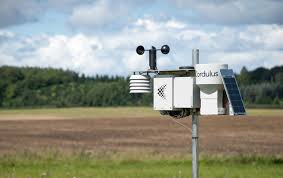Windows Data Recovery: Regain Access to Your Lost Files
Losing important data on your Windows computer can be a stressful experience, whether it’s due to accidental deletion, system crashes, or hardware failures. Fortunately, there are effective data recovery solutions available that can help you retrieve your lost files and documents.
Causes of Data Loss on Windows
There are various reasons why data loss can occur on a Windows system:
- Accidental deletion of files or folders
- Corruption of the file system
- Virus or malware attacks
- Hardware failures such as a failing hard drive
- Software conflicts or crashes
Windows Data Recovery Solutions
When faced with data loss on your Windows computer, it’s important to act quickly and use reliable data recovery tools to increase the chances of successful file retrieval. Here are some common methods for recovering lost data:
- Use Data Recovery Software: There are several third-party data recovery tools available that can scan your storage devices and recover lost files. These programs are designed to handle various data loss scenarios and offer user-friendly interfaces for easy recovery.
- Restore from Backup: If you have a backup of your files using Windows Backup or third-party backup solutions, you can restore your lost data from these backups. Regularly backing up your important files is a proactive way to prevent permanent data loss.
- Hire Professional Data Recovery Services: In cases where standard recovery methods fail, or the data is extremely valuable, you may consider seeking help from professional data recovery services. These experts have specialized tools and expertise to recover data from severely damaged storage devices.
Tips for Preventing Data Loss in the Future
To avoid potential data loss incidents in the future, consider implementing the following best practices:
- Regularly back up your important files to an external storage device or cloud service.
- Avoid opening suspicious email attachments or clicking on unknown links that could introduce malware into your system.
- Maintain updated antivirus software to protect your computer from malicious threats.
- Avoid sudden power outages by using surge protectors and uninterruptible power supplies (UPS).
7 Essential Tips for Successful Windows Data Recovery
- Stop using the affected drive to prevent further data loss.
- Use data recovery software like Recuva, EaseUS Data Recovery Wizard, or Disk Drill.
- Avoid installing the data recovery software on the same drive you are trying to recover data from.
- Perform a deep scan for better chances of recovering lost files.
- Check for hidden files and folders during the recovery process.
- Save recovered files to a different storage device to avoid overwriting them.
- Consider seeking professional help if you are unable to recover the data on your own.
Stop using the affected drive to prevent further data loss.
It is crucial to stop using the affected drive immediately when facing data loss on a Windows system to prevent further complications and potential data loss. Continued use of the drive can overwrite the lost data, making it more challenging to recover. By ceasing all activities on the affected drive, you increase the chances of successful data recovery through specialized tools or services. Prioritizing this step can significantly improve the prospects of retrieving valuable files and documents that may have been accidentally deleted or lost due to system issues.
Use data recovery software like Recuva, EaseUS Data Recovery Wizard, or Disk Drill.
When facing data loss on a Windows system, utilizing data recovery software such as Recuva, EaseUS Data Recovery Wizard, or Disk Drill can be highly effective in recovering lost files. These tools are designed to scan storage devices thoroughly and retrieve deleted or inaccessible data, providing users with a user-friendly interface and powerful features to facilitate the recovery process. By leveraging the capabilities of reputable data recovery software, individuals can increase their chances of successfully recovering valuable files and documents that may have been accidentally deleted or lost due to system issues.
Avoid installing the data recovery software on the same drive you are trying to recover data from.
It is crucial to avoid installing data recovery software on the same drive from which you are attempting to recover lost data. Installing the software on the affected drive can overwrite the existing data, potentially making it more challenging or even impossible to retrieve your files. By installing the recovery software on a separate drive or external storage device, you can prevent further damage to the lost data and increase the likelihood of successful recovery.
Perform a deep scan for better chances of recovering lost files.
Performing a deep scan when attempting Windows data recovery can significantly increase the likelihood of recovering lost files. By conducting a thorough and comprehensive scan of the storage device, including sectors that may not be accessed during a quick scan, you improve the chances of locating and retrieving all possible lost data. Deep scans delve deeper into the file system and can identify fragmented or partially overwritten files that may be missed in a regular scan, ultimately enhancing the success rate of data recovery efforts.
Check for hidden files and folders during the recovery process.
During the data recovery process on Windows, it is essential to check for hidden files and folders to ensure a comprehensive recovery of all lost data. Hidden files and folders may contain important information that could be overlooked if not included in the recovery scan. By enabling the option to show hidden files in the recovery software settings, users can increase the chances of retrieving all relevant data and avoid missing out on critical files that may have been intentionally or unintentionally hidden. This proactive approach can significantly enhance the success of the data recovery process and help users recover a more complete set of their lost files.
Save recovered files to a different storage device to avoid overwriting them.
When recovering files on Windows, it is crucial to save the retrieved data to a separate storage device to prevent overwriting the original lost files. By storing the recovered files on a different device, such as an external hard drive or USB drive, you ensure that the data remains intact and unaffected by any potential issues during the recovery process. This precautionary measure helps safeguard against accidental data loss and maximizes the chances of successfully recovering and accessing your important files without risking their integrity.
Consider seeking professional help if you are unable to recover the data on your own.
When facing challenges in recovering lost data from your Windows system, it is advisable to consider seeking professional assistance if your own recovery attempts prove unsuccessful. Professional data recovery services have the expertise and specialized tools required to handle complex data loss scenarios, especially when dealing with severely damaged storage devices or corrupted files. By entrusting your data recovery needs to professionals, you can increase the likelihood of successful file retrieval and minimize the risk of permanent data loss.




